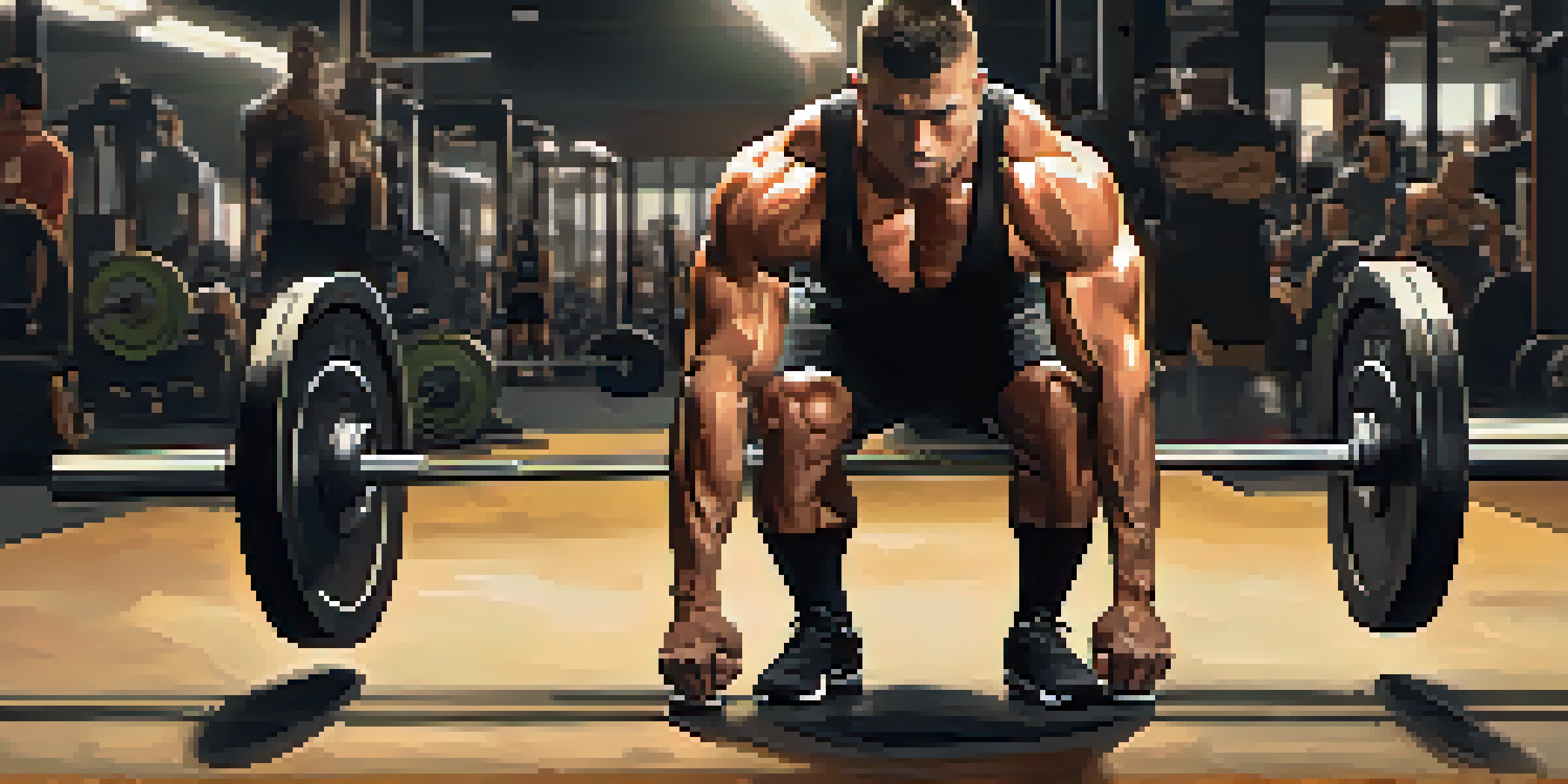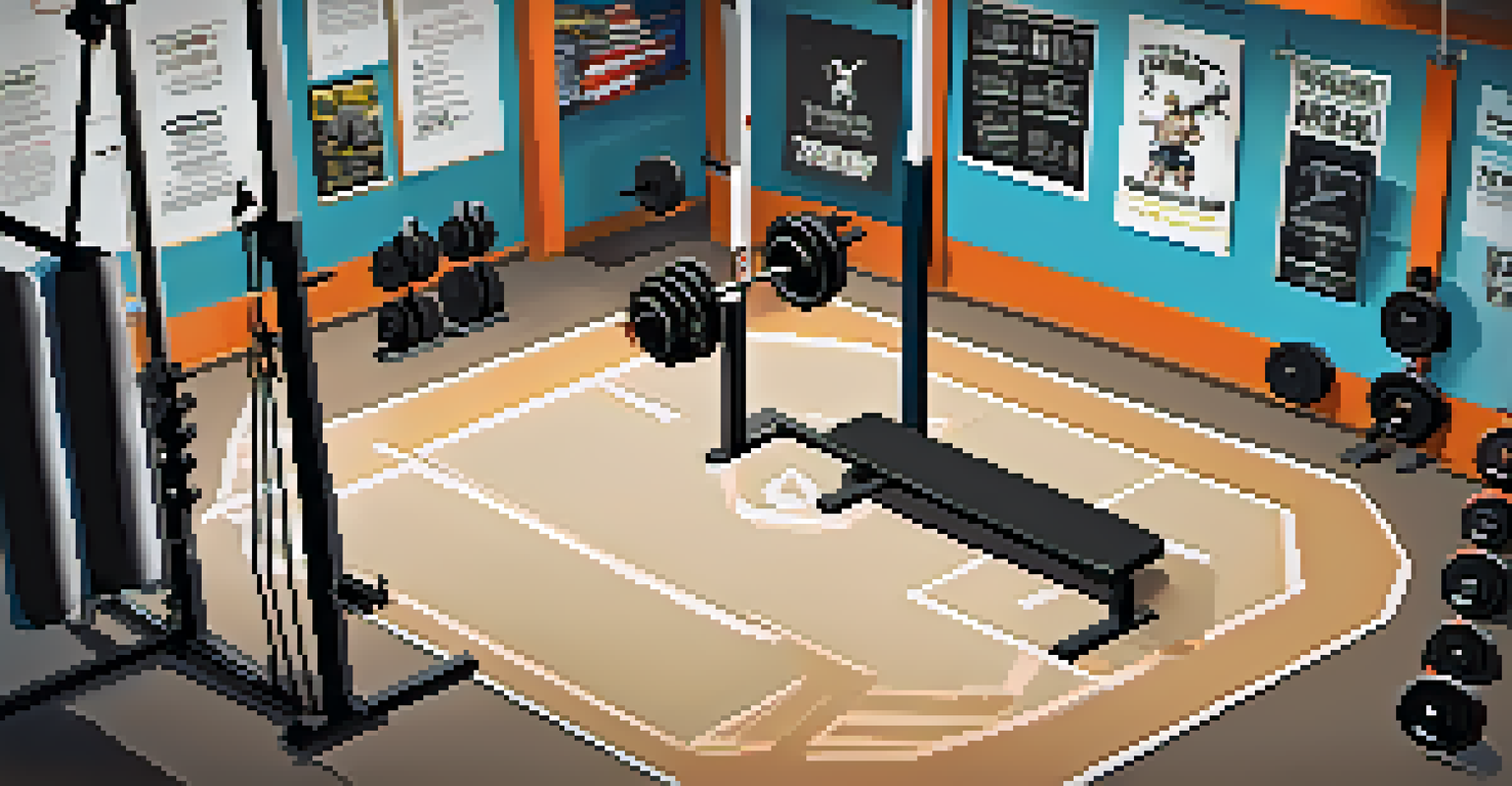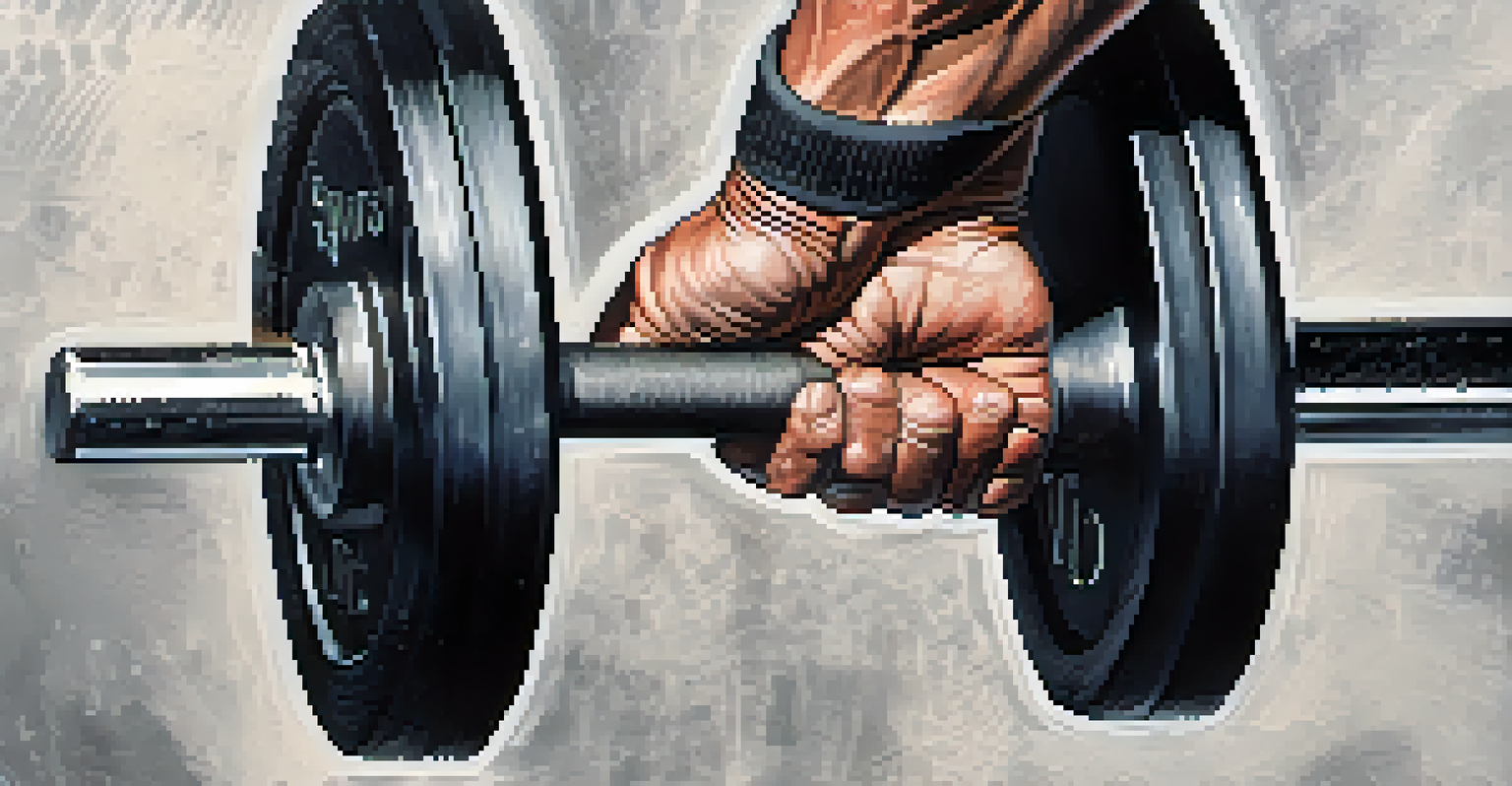The Deadlift: Key to Powerlifting Performance

Understanding the Deadlift: The Foundation of Powerlifting
The deadlift is one of the three main lifts in powerlifting, along with the squat and bench press. It involves lifting a barbell from the ground to hip level, primarily engaging your posterior chain—the muscles on the back of your body. This lift is often considered the ultimate test of overall strength, making it crucial for any serious powerlifter. If you're looking to compete or simply enhance your strength, mastering the deadlift is essential.
Strength does not come from physical capacity. It comes from an indomitable will.
Not only does the deadlift build tremendous strength, but it also promotes functional fitness. Everyday tasks like lifting heavy objects become easier when you've trained your muscles through deadlifting. Think of it as a real-world application of strength training, where you're preparing your body for life’s physical demands. This connection between gym training and daily activities makes the deadlift an invaluable exercise.
Moreover, the deadlift serves as a benchmark for measuring progress in powerlifting. Many lifters use their deadlift numbers to gauge their overall performance and strength gains. As you track your lifting progress, you'll develop a clearer understanding of your capabilities, which can motivate you to push even harder in your training.
Proper Technique: Lifting Smart to Lift Heavy
Achieving proper deadlift form is crucial not only for maximizing strength but also for preventing injuries. A common mistake is rounding the back, which can lead to serious issues. Instead, focus on maintaining a neutral spine, engaging your core, and driving through your heels as you lift. Imagine your body as a machine, where every part must work in harmony to achieve the desired result—a successful lift.

An effective deadlift involves setting up correctly before you even lift the bar. Stand with your feet shoulder-width apart, grip the bar just outside your knees, and ensure your shoulders are slightly in front of the bar. This alignment helps distribute the weight evenly, allowing you to lift more efficiently. Remember, the deadlift isn’t just about brute strength; it’s about technique too.
Deadlift: Key to Powerlifting Success
Mastering the deadlift is essential for building strength and enhancing overall powerlifting performance.
As you practice, consider filming yourself to analyze your form. Watching your lifts can reveal subtle mistakes that are easy to overlook in the moment. Additionally, seeking feedback from experienced lifters or coaches can provide invaluable insights that help refine your technique and enhance your performance.
Building Strength: The Deadlift's Impact on Overall Power
The deadlift is a compound movement, meaning it engages multiple muscle groups simultaneously. This engagement leads to greater overall strength gains compared to isolation exercises. When you deadlift, you activate your glutes, hamstrings, back, and core, creating a powerful synergy that translates into improved performance in all lifting disciplines. It's as if you're lighting a fire that fuels your overall strength.
The only way to prove that you’re a good sport is to lose.
Incorporating deadlifts into your training routine can boost your performance in other lifts as well. Many lifters notice improvements in their squat and bench press after focusing on deadlifting. This carryover effect occurs because the posterior chain plays a crucial role in stabilizing and generating power during these movements. Think of your body as a connected system; when one part gets stronger, the others benefit too.
Regularly varying your deadlift routine—by using different grips, stances, or training techniques—can prevent plateaus and keep your strength gains on track. Consider mixing in sumo deadlifts or Romanian deadlifts to target muscles differently. This variety not only keeps your training interesting but also challenges your body to adapt and grow stronger.
Injury Prevention: Staying Safe While Lifting Heavy
Injuries can be a significant concern in powerlifting, but proper deadlifting techniques can mitigate these risks. One key factor is ensuring you warm up adequately before attempting heavy lifts. Dynamic stretches and lighter sets prepare your muscles and joints for the intensity to come, reducing the likelihood of strains or tears. Think of warming up as getting your engine ready before a long drive.
Moreover, listening to your body is paramount when lifting heavy. If you feel any sharp pain or discomfort, it’s essential to stop and assess the situation. Ignoring signals from your body can lead to serious injuries that may sideline you for weeks or even months. Remember, it's better to have a slower, sustainable progression than to push through and face setbacks.
Proper Technique Prevents Injuries
Maintaining proper form during the deadlift is crucial to avoid injuries and maximize lifting efficiency.
Additionally, incorporating mobility work and strength training for supporting muscle groups helps create a well-rounded approach to injury prevention. Exercises that strengthen your core and improve flexibility can enhance your deadlift performance while keeping you safe. By treating your body like a temple and investing in its upkeep, you'll reap the rewards in the long run.
The Mental Game: Building Confidence with Every Lift
Powerlifting is not just a physical challenge; it’s also a mental one. Developing confidence in your deadlift can significantly impact your performance. Visualization techniques, such as picturing yourself successfully completing the lift in your mind before you attempt it, can enhance your focus and determination. Think of it as rehearsing for a big performance; the more you practice mentally, the better you’ll execute physically.
Setting small, achievable goals is another effective way to build confidence over time. Instead of only aiming for a one-rep max, focus on hitting a certain number of repetitions with a lighter weight before progressing. This gradual approach allows you to celebrate victories along the way, reinforcing your belief in your abilities. Each successful lift becomes a stepping stone to greater achievements.
As you gain experience and confidence in your deadlifting, you'll find that tackling heavier weights becomes less daunting. Positive self-talk and affirmations can also play a crucial role in overcoming mental barriers. Trusting in your training and abilities will help you push through challenges and reach new heights in your powerlifting journey.
Nutrition's Role: Fueling Your Deadlift Performance
Nutrition is a critical aspect of any powerlifting regimen, and it plays a significant role in your deadlift performance. Consuming a balanced diet rich in proteins, carbohydrates, and healthy fats provides the energy needed to fuel your workouts. Think of your body as a high-performance vehicle; the quality of the fuel you put in directly impacts how well it runs.
Post-workout nutrition is just as important. After a deadlift session, your muscles are in recovery mode, requiring nutrients to repair and grow stronger. A meal or shake containing protein and carbohydrates within 30 minutes after lifting can enhance recovery and muscle synthesis. This practice will ultimately lead to better performance in future lifts, keeping you on track with your goals.
Nutrition Fuels Your Lifting Journey
A balanced diet and proper hydration are vital for optimizing your deadlift performance and recovery.
Hydration is another vital component that often gets overlooked. Staying properly hydrated supports muscle function and overall performance. Dehydration can lead to decreased strength and endurance, which can hinder your deadlift progress. By prioritizing hydration, you ensure your body is primed for every lift, maximizing your potential.
Conclusion: Mastering the Deadlift for Powerlifting Success
In conclusion, the deadlift is more than just a lift; it's the cornerstone of powerlifting performance. By understanding its importance, mastering proper technique, and prioritizing strength and nutrition, you set yourself up for success in the sport. Remember, every lifter's journey is unique, so focus on your personal progress and celebrate your achievements along the way.
As you continue to refine your deadlift skills, you'll likely see improvements not just in your lifting but also in your overall fitness and confidence. Embrace the challenges and victories that come with training, as they are all part of the journey. Surround yourself with a supportive community that shares your passion, and you'll find motivation and encouragement to keep striving for your goals.

Ultimately, the deadlift can elevate your powerlifting performance to new heights. So, lace up those lifting shoes, approach the bar with determination, and get ready to unleash your strength—one lift at a time!